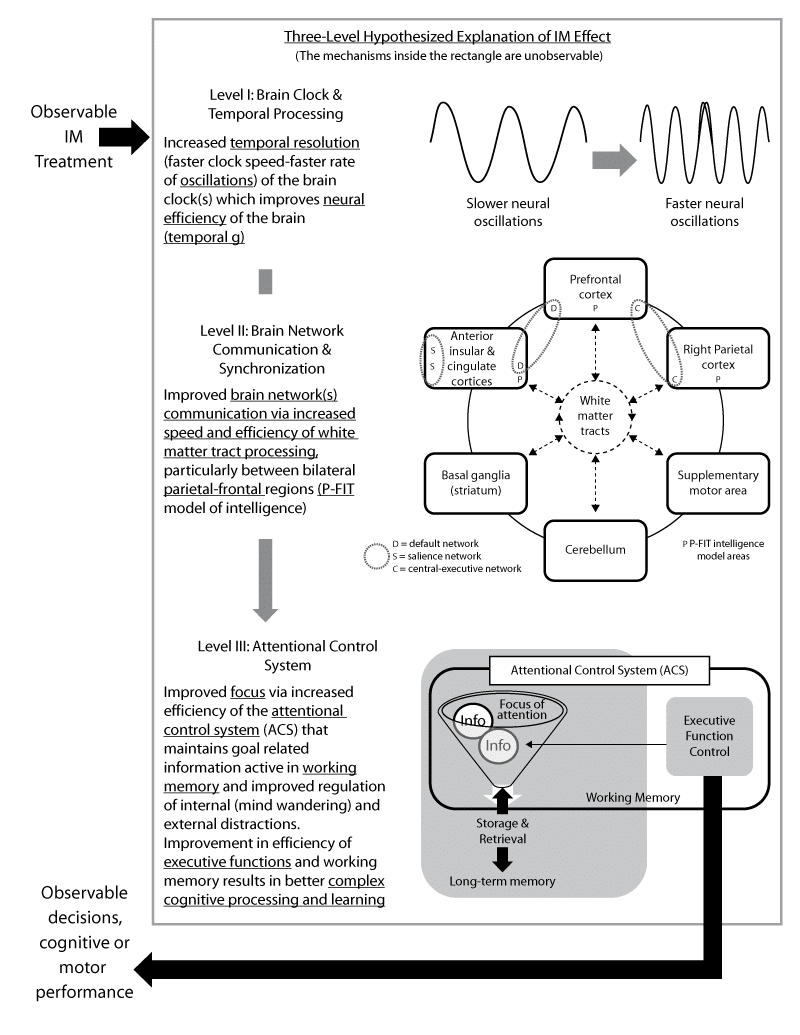The Science Behind Interactive Metronome
The primary conclusions from the detailed scientific explanation of the IM are:
- The diversity of performance domains positively impacted by IM technology is due to IM improving the function of crucial brain-based domain-general neurocognitive mechanisms.
- The precise, real-time IM millisecond feedback impacts the temporal processing resolution of the internal brain clock, which in turn improves neural efficiency—and thus, more efficient temporal and information processing in the brain.
- The IM effect appears to be the result of increased efficiency and synchronization of communication between the primary brain structures that comprise the functional brain networks involved in performing both the cognitive and motor demands of IM training.
- IM technology may be improving brain network communication, especially within the major brain networks at the core of the P-FIT (parietal-fontal integration) model of general intelligence. IM technology may be improving the efficiency of the parietal-frontal brain network which is critical to general intellectual functioning, working memory, controlled attention, and overall cognitive efficiency.
- One of the most important IM training outcomes (but not the only outcome) is improved focus via increased efficiency of the attentional control system (ACS) that maintains goal related information active in working memory in the presence of internal (mind wandering) and external distractions. Improvement in efficiency of executive functions and working memory results in more efficient complex cognitive processing and learning.

Cognitive focus plays a crucial role in success or failure in school, work, and almost all aspects human performance. Yet, few of us receive formal training on how to improve our focus (control our attention). Contemporary brain research, which is described in this working paper, and which is briefly summarized below, has shed light on the nature of cognitive focus and has provided technology to train and maintain a “focused brain.”
The human mind has a limited capacity to engage in laser-beam like focus or controlled attention—up to 20 to 30 minute at maximum. Contemporary brain research describes focus or controlled attention as the ability to direct one’s attentional spotlight on only task relevant information in one’s mental workspace (working memory). This requires constant monitoring and timely feedback to the attentional control center regarding the status of one’s “locked on” focus status. When focused, cognitive control mechanisms are constantly monitoring performance and immediately detect and deflect outside distractions and self-generated mind wandering. Focus training can result in the “quieting of the busy mind.”

